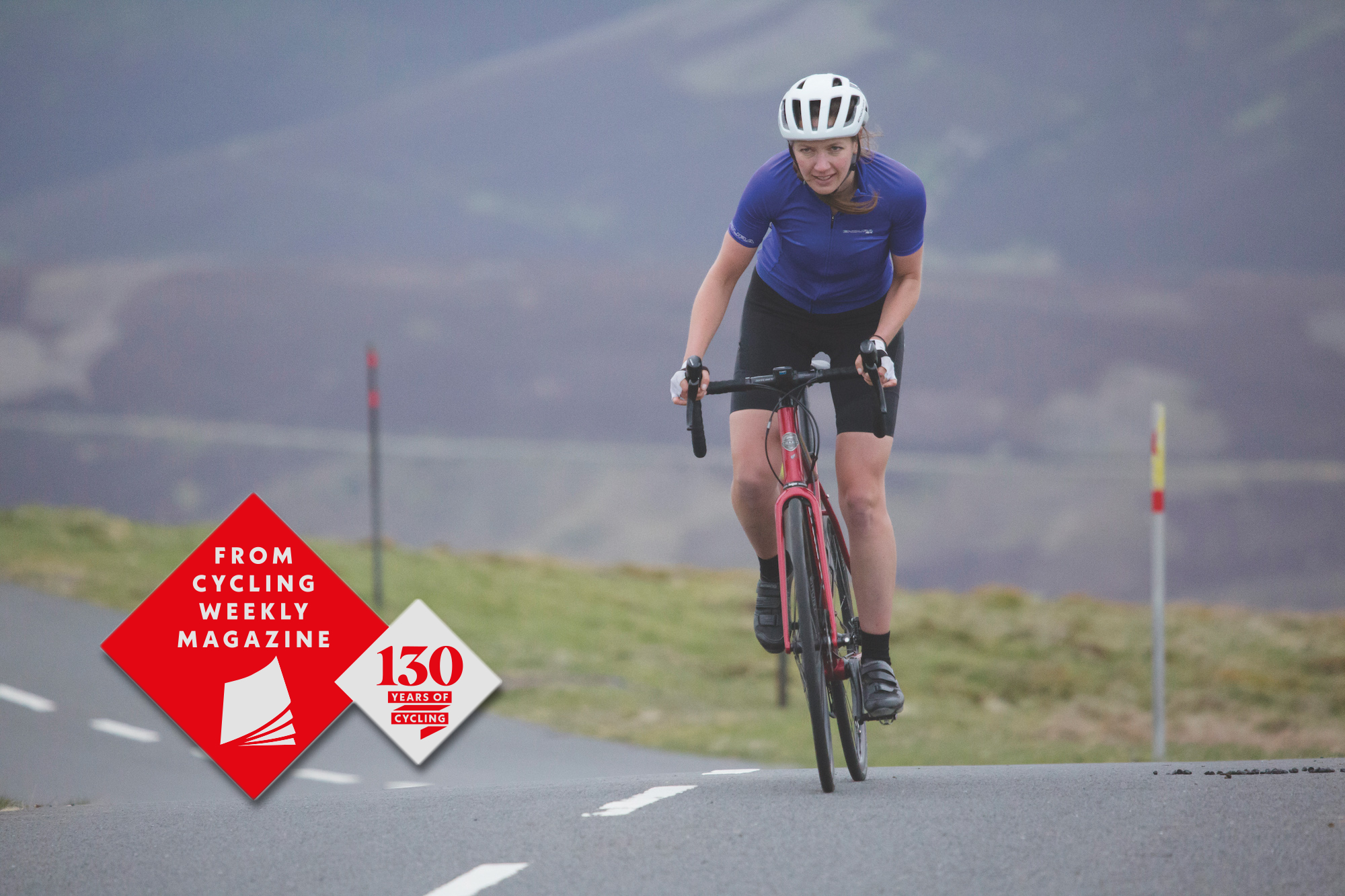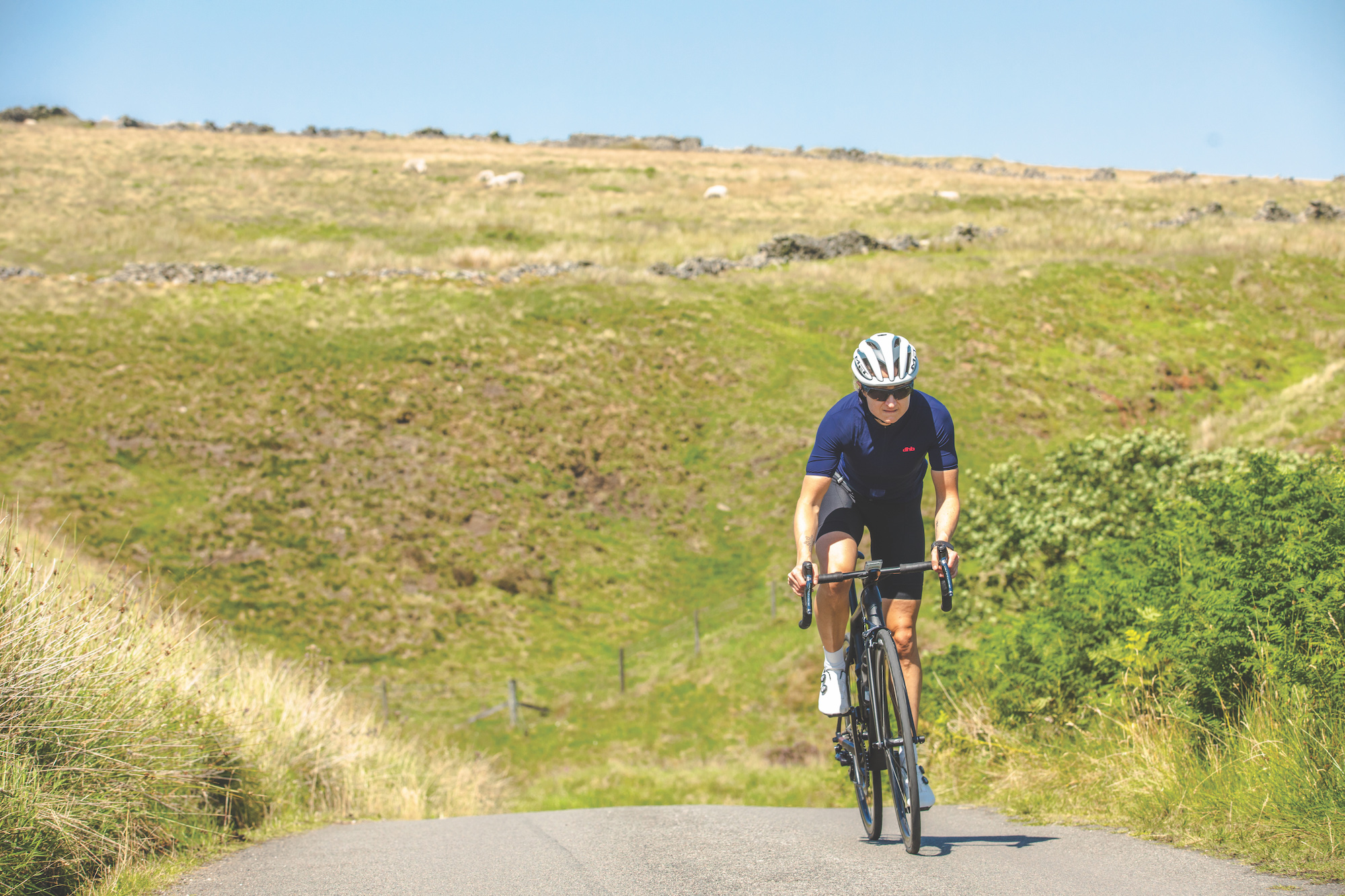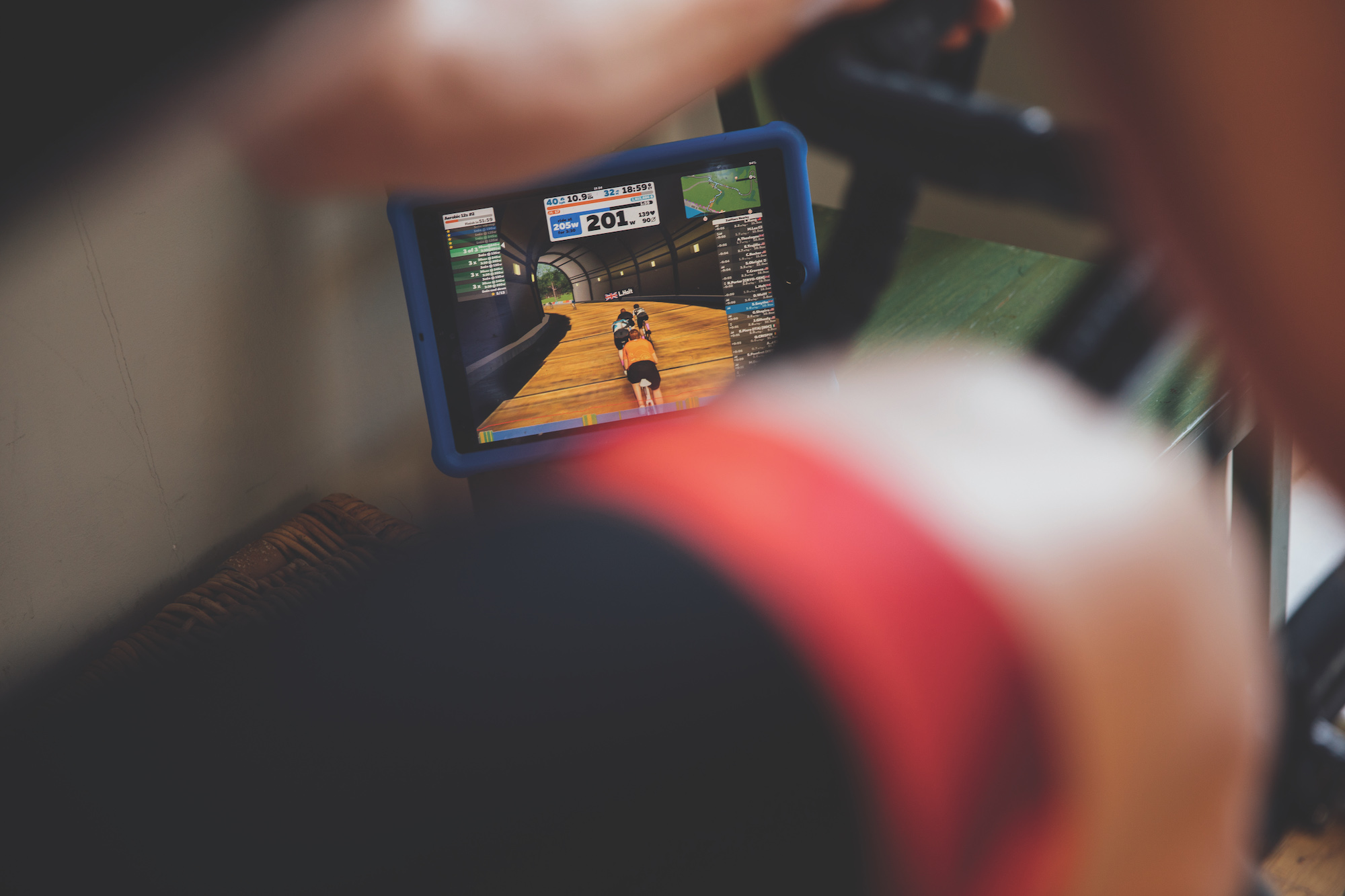Find the inner strength within: The three pillars of self-motivation
Sports psychologist Dr Josephine Perry explains why mastery, autonomy and belonging are the holy trinity underpinning your cycling passion


Given you are reading Cycling Weekly, it’s fair to assume a few things about you: you’re rarely happier than when riding a bike, your favourite bike-buying equation is n+1, and much of your daydreaming involves sunny
days, smooth roads and coffee stops. When your motivation goes AWOL, however, you feel lost and unhappy and in desperate need of a kick up the bum to get you back on the saddle – and that’s what this feature is about: how to stay motivated or, if you do lose your mojo, how to get it back.
Motivational researchers have identified, in theoretical terms, that above-cited ‘kick up the bum’: they call it developing your self-determination. The theory suggests that, to maintain self-determined motivation – the type that gets you out of the door on even the toughest days – you need three pillars in place: 1. mastery over what you are doing; 2. autonomy to do it your own way; and 3. a sense of belonging to your sporting community. Missing just one of these pillars may see you struggle to get on the bike or keep riding to your full enjoyment or potential.
Belonging

To take the last pillar first, let’s home in on belonging. To feel properly motivated, we need to feel connected to our social surroundings and cared for by the people in them. Social connection is a core human need, the absence of which harms our physical and mental health and limits opportunities to succeed. This is one reason why the last year has been so tough; our usual external motivators – group rides, races and championships – disappeared and we were left alone with our bikes. We were physically distanced from our club-mates, banned from riding in groups, races and sportives.
>>> Subscriptions deals for Cycling Weekly magazine
Many found going online saved them. Even small social interactions like receiving a ‘Ride On’ thumbs-up on Zwift or chatting in a WhatsApp or Facebook group provided some sense of community. Connections with fellow riders help us feel embedded in the cycling community, so develop that sense of being part of something bigger.
“Connections act as a protective factor against stress,” says Hugh Gilmore, performance psychologist to Team GB athletes, “and it is not necessarily the quantity but the quality of social connection that counts. Humans use social connections to vent frustrations and also to get perspective on their own challenges.” Making contact with others is like a safety valve for your mental wellbeing.
The latest race content, interviews, features, reviews and expert buying guides, direct to your inbox!
Christina Maddy, 29, who rides with Giant Camden Team Liv, set up a virtual cycling club when she wasn’t able to ride outside with her friends during the first lockdown. Meanwhile she connected with other riders on social channels, using a Wattbike for indoor riding, Strava for tracking outdoor rides and Zwift for entertainment. All three helped her feel more like a cyclist by staying connected. “Online platforms are good for following the progress of your friends and connections,” she says. “You can also create and join groups, where you can compare segment times, distance covered and feet climbed per week, which the competitive side of me loves.”
Maddy accepts that sociability is fundamental to her cycling enjoyment.
“Being a member of a cycling club is hugely motivating, as some rides, especially the dark winter morning ones, I probably wouldn’t do if I was cycling alone,” she admits. “I probably cycle 30 per cent more just because of the fact I’ve committed to ride with a group – the social side is great and really helps the time pass quickly. Riding with better cyclists forces you to push harder during rides to keep up with them too.”
How best to use your social connections to maintain motivation? Psychologist Gilmore suggests mapping out your connections. “Put yourself at the centre and draw out your support network using three different thicknesses of line to indicate the strength of the connection to the different people. What athletes find when doing this is they are normally quite connected, but it identifies any weak or infrequent connections to important people – connections that you can try to strengthen.”
If you find yourself without many lines to draw, it may be time to get proactive about making more friends and cycling acquaintances. The reality for many is having numerous weak connections – sometimes too many. “You can’t have more than 150 people in your network,” says Gilmore, “as research shows it’s difficult to maintain meaningful connections beyond that number.”
Mastery

The second pillar to boost our motivation is mastery – having confidence in being able to ride with the level of skill we need. If you can remember back to your first club ride or race, your fears probably came down to not knowing whether you would keep up, make it to the end or even knock someone else off. No one wants to put themselves on the line or feel likely to do something wrong and look like a muppet. Building up skills, techniques and racing know-how dissipates those fears; it becomes far easier to see each race or ride as a challenge and less of a potential threat.
James Spragg is a cycling coach who uses the magic of mastery to get athletes motivated, particularly to do more technical types of riding. “In cyclo-cross, we get athletes to build a picture in their mind of how they get around the course, like a mental map with key points for each section,” he says. “We then do some visualisation during the warm-up, perfecting the map within their mind so they are really mentally prepared. The debrief afterwards focuses on how they executed that plan.”
For Spragg’s riders, this mapping means that even in a bad race there are positives to celebrate. “They chunk down the race and they stay task-focused, moving from one task to the next straight away, practising and improving in the race. It keeps them really focused, with no wasted laps.”
Josh Jones, 28, is coached by Spragg, and when switching over to ‘cross from elite road racing, knew how important mastery of the technical elements would be. “For me, it is important to schedule in specific skills-based sessions where there is less focus on achieving any physiological benefit.” Most of his skill improvement work is based around cornering. “In any given ‘cross course, the other features come and go but the only thing guaranteed is that you will have a lot of corners. If you lose even a 10th of a second on each of 30 corners, it quickly adds up to three seconds a lap and that is 20-30 seconds over the race, often much more.”
Jones has found this skill development focus has had a huge impact on his motivation. “Having the skills session is a really good reminder of what it is like to be in a race. When you feel like you are nailing the sessions and seeing improvements, it is really motivating. It gets you fired up and ready to and do it again – but this time with a number on.”
To work on your mastery of technique, skills or tactics, it can be useful to create a skills sheet. On one side of a piece of paper, list 10 skills that would make the biggest difference to your success.
Each time you achieve one, write the date next to it, until you have five dates by each skill, giving you 50 examples of having mastered that particular thing, boosting your confidence and motivation.
Autonomy

The final pillar is autonomy – being able to take control of your own destiny and behaviours. Autonomy means having a choice and a voice in what we do. This one is probably the hardest pillar to nail, as so many things can prevent it. Parenting or caring responsibilities, your job encroaching on your free time, or even your coach trying to keep you focused on their goals not yours, may make you feel robbed of autonomy.
For the pros, this can be even worse, as their race schedule is dictated by their sports director, team management or even sponsors.
Dr Andrew Kirkland, lecturer in sports coaching at the University of Stirling, urges coaches to allow athletes to take responsibility for their own training. “Telling someone what to do rarely works and has potential to go badly wrong,” he says. “If I set a training programme for a rider and they adopt it uncritically or they believe that an alternative approach may be better, then the relationship can break down quickly. Rather, I want to negotiate a programme that can be adapted in consultation with the rider.”
Having this adaptability in the pro system can be really hard. A good example is Steve Cummings, who spent a long time in the system – starting on the track with Team GB and moving over to a domestique role in Team Sky. It was when Cummings got some autonomy at MTN-Qhubeka that he started to get his biggest results, including two stages of the Tour de France and the Tour of Britain overall.
Coaching specialist Kirkland stresses that riders need the freedom to choose their own racing priorities, relegating coaches to pragmatic overseers. “I’ll use training and past racing data to set constraints on power, but the athlete knows it’s OK to adapt such strategies depending on whether they’re feeling good or bad. That way, we’re both accountable for the outcome without being too tough on each other when things go wrong.” He does this by focusing early on developing a strong, honest relationship. “It demonstrates I care, it builds rapport and trust. Rider voice and choice comes naturally that way, without being forced.”
To boost your autonomy, set aside 20 minutes to yourself to enjoy a mug of coffee and a daydream. What would feel like a realistic but super-exciting success in cycling? What would make you proud to achieve it and passionate about the process of getting there? Independently setting a goal that stirs butterflies of excitement in your stomach is usually enough to take back your autonomy.
Finally, it’s important to be realistic: we will never be 100 per cent motivated 100 per cent of the time. In fact, as a psychologist, I would worry about someone who never seems to have peaks and dips in their moods or motivation. What’s important is to recognise your individual traits in
ways that ultimately benefit your motivation. Embrace the dips, understand they are normal and that trying to fight them is self-defeating. Instead, aim to develop your cycling performance and enjoyment by understanding yourself – so that when you do hit a dip, you can gently manipulate whichever of your three pillars is lacking, to get your motivation back on track.
Pro rider’s view: Riding the self-determined way

Reigning eSports Cycling World Champion Ashleigh Moolman proactively uses the three pillars to stay motivated and focused on her performance.
“My best performances always come from a scenario where, within the race, I feel that I have been really well supported by my team,” says Moolman, “that they have worked so hard to make sure I am in the best position to win. Then, when it comes to going for the win, you just have the ability to dig so much deeper because you’ve been surrounded by all these people who have believed in you, who have worked for you.”
When it comes to mastery, Moolman says she is a numbers person. “I studied engineering and I have an analytical mindset. I like to look at my numbers, I like to go back through them and see what my power was – did I hit the target, am I making good progress? When I first started cycling, I was always earmarked as a climber... In my first year [at the Giro] I finished 18th, which was pretty good at my first ever Grand Tour, and as the years went by my performance improved from 13th to 10th to ninth to eighth to fifth and then second. Seeing that improvement helps to motivate me to keep going and to know I’m on the right path.”
To maintain her sense of autonomy, Moolman focuses on controlling the controllables. “There is always going to be adversity in cycling, even if you have made all the right choices, but when you are surrounded by all these people who believe in you and everything you can control is perfect, it empowers you to handle all the things that go wrong.”
This feature originally appeared in the print edition of Cycling Weekly, on sale in newsagents and supermarkets, priced £3.25.
You can subscribe through this link here.
That way you’ll never miss an issue.
Dr Josephine Perry is a Chartered Sport and Exercise Psychologist whose purpose is to help people discover the metrics which matter most to them so they are able to accomplish more than they had previously believed possible. She integrates expertise in sport psychology and communications to support athletes, stage performers and business leaders to develop the approaches, mental skills and strategies which will help them achieve their ambitions. Josephine has written five books including Performing Under Pressure, The 10 Pillars of Success and I Can: The Teenage Athlete’s Guide to Mental Fitness. For Cycling Weekly she tends to write about the psychological side of training and racing and how to manage mental health issues which may prevent brilliant performance. At last count she owned eight bikes and so is a passionate advocate of the idea that the ideal number of bikes to own is N+1.
